First published December 2022 | Words and photos by Vietnam Coracle

Tom Divers is the founder and creator of Vietnam Coracle. He’s lived, travelled and worked in Vietnam since 2005. Born in London, he travelled from an early age, visiting over 40 countries (he first visited Vietnam in 1999). Now, whenever he has the opportunity to make a trip, he rarely looks beyond Vietnam’s borders and his trusty motorbike, Stavros. Read more about Tom on the About Page, Vietnam Times and ASE Podcast.
Although I’m by no means a ‘fitness freak’, I do like to keep relatively healthy and I try to do some form of physical exercise everyday, even when I’m travelling. Over the years, I’ve noticed that travellers often neglect their fitness and general health. I’ve found this to be true of myself and also my travel companions, regardless of age or gender. There are many reasons for neglecting fitness while travelling: you’re away from your regular routines and equipment, your diet is different, and you’re busy experiencing new things. Fitness just isn’t a priority. However, after years of travelling regularly, I’ve settled on various exercise routines, methods and activities that are suitable for travel and help me to maintain a satisfactory level of fitness while on the road. This is often referred to as ‘travel fitness’.
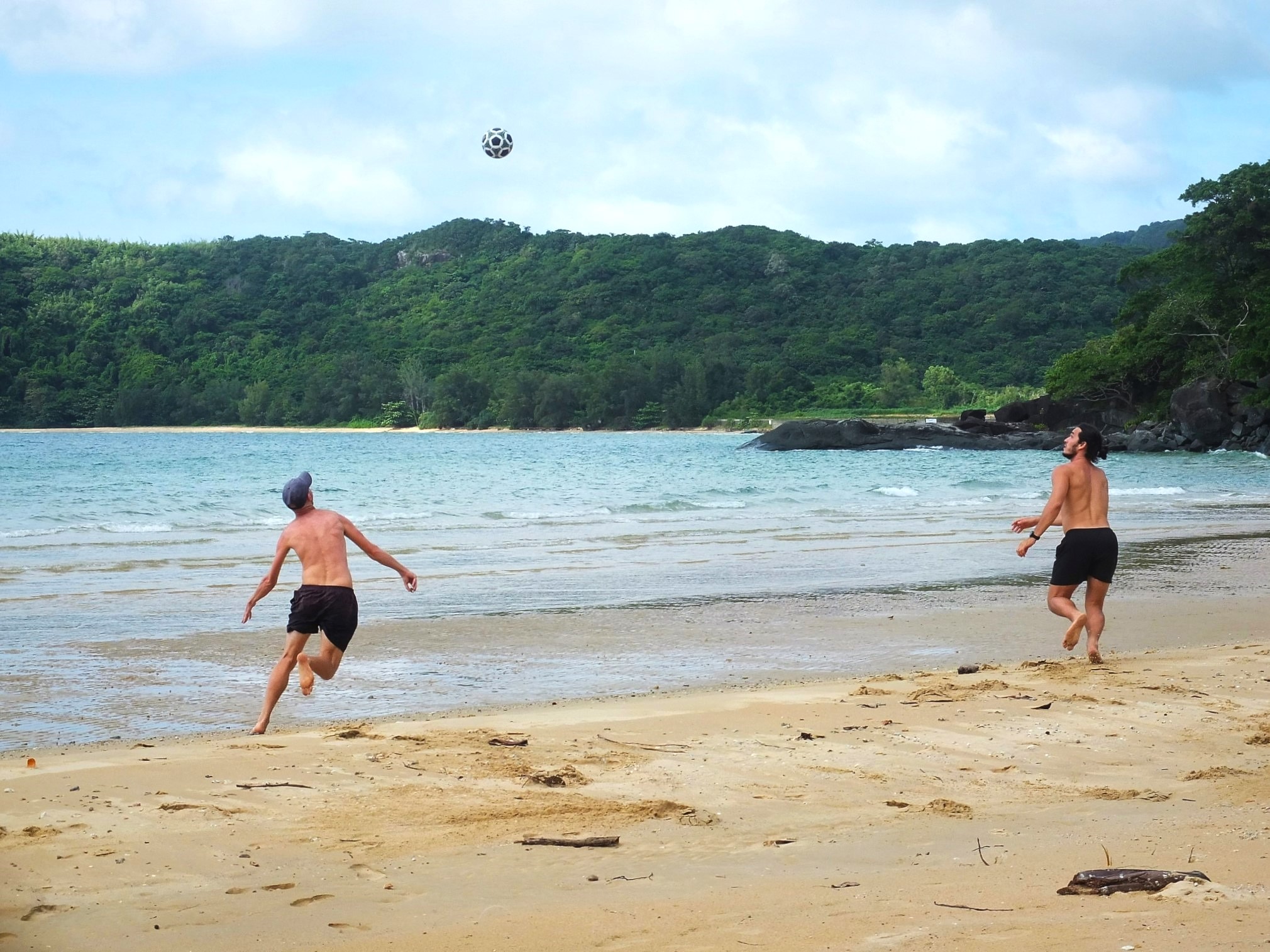
[Back Top]
TRAVEL FITNESS
Ways to Stay Healthy & Active while Travelling
The ‘travel fitness’ routines I practice are free and don’t require any special equipment; they can be practiced in small spaces, like a hotel room, or in the local environment, such as a beach, and can be performed solo or in a group. The suggestions on this page only represent exercises and methods that I personally find useful and beneficial. I’m in no way a health or fitness expert, and there are obviously many other ways to stay fit when travelling. You’re welcome to share your own ‘travel fitness’ ideas in the comments section, but please don’t include links.

When I travel, I often trick myself into thinking I’m physically fatigued (especially on motorbike road trips), but, in reality, I haven’t used my body much at all. Most of the tiredness I’m experiencing is psychological: travel can sometimes be a big mental effort. In Saigon (Ho Chi Minh City), where I’m based, I play 10+ hours of tennis each week. My level is decent and my practice sessions and matches are often in the midday sun, heat and humidity. This keeps my fitness levels pretty good when I’m in the city. But, on the road, tennis isn’t an option – it requires too much equipment and time. Over the years, I’ve found other ways of staying fit when I’m on the move:
CONTENTS:
1. High Intensity Interval Training (HIIT)
2. Breathwork
3. Swimming
4. Running
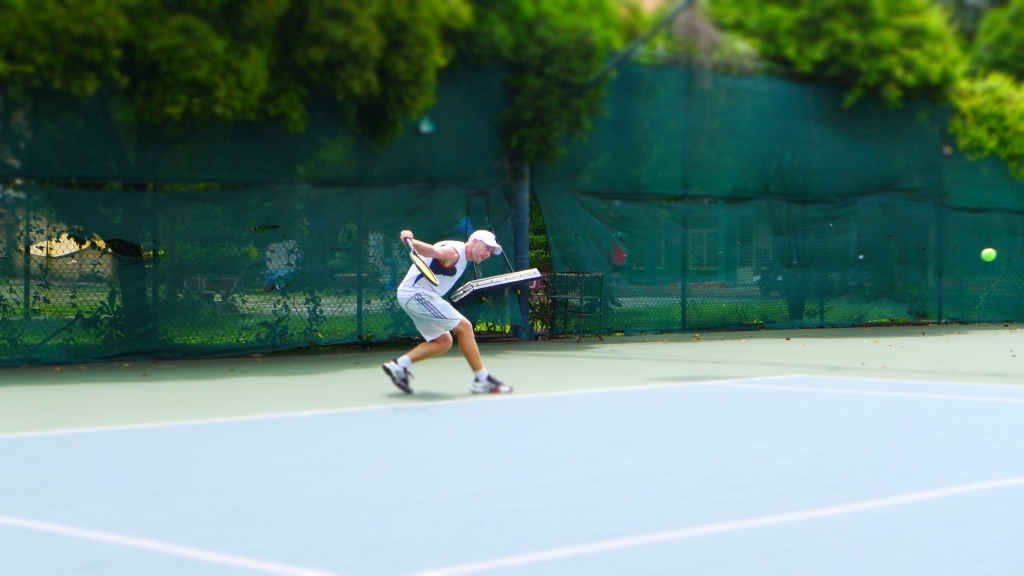

High Intensity Interval Training: HIIT
High Intensity Interval Training (HIIT) is an ideal exercise for travelling, because it doesn’t require any equipment or space, and it doesn’t take much time. And yet, HIIT is a full-body workout, which mixes aerobic and anaerobic, cardio and strength. There are lots of variations on the HIIT theme, including CrossFit and Tabata. But the basic principle is the same: short 20-30 second sets of multiple exercises performed at maximum intensity repeated one after the other as a group with minimum recovery time between each set of exercises. A typical routine could be the following 9 exercises: jumping jacks (20 secs), burpees (20 secs), split squats (20 secs), push-ups (20 secs), crunches (20 secs), mountain climbers (20 secs), jump squats (20 secs), crunches variation (20 secs), high knees (20 secs); take a 10-second break between each exercise and repeat the routine 3-5 times depending on the level of intensity and your fitness.
HIIT raises your heart-rate dramatically within minutes and there are all sorts of studies about the benefits of these routines. However, I would suggest focusing on form before speed and intensity, as bad form can negate the benefit of each exercise or cause injury. I also find it important to warm up and down in order to ease my body in and out of these intense routines. HIIT workouts can be performed in the smallest of hotel rooms or on a beach or even on the roadside. The shortest HIIT routines are 10-20 minutes, but the longer ones extend from 30-60 minutes, including a warm up and cool down. You could also take advantage of pull-up bars and other basic exercise equipment in small parks throughout Vietnam to diversify your routines. For me, HIIT is physically challenging and invigorating: I find the exercises keep my body and my metabolism ticking over nicely when I’m on the road and away from my normal physical activities. You can find loads of routines, advice and information about HIIT online.

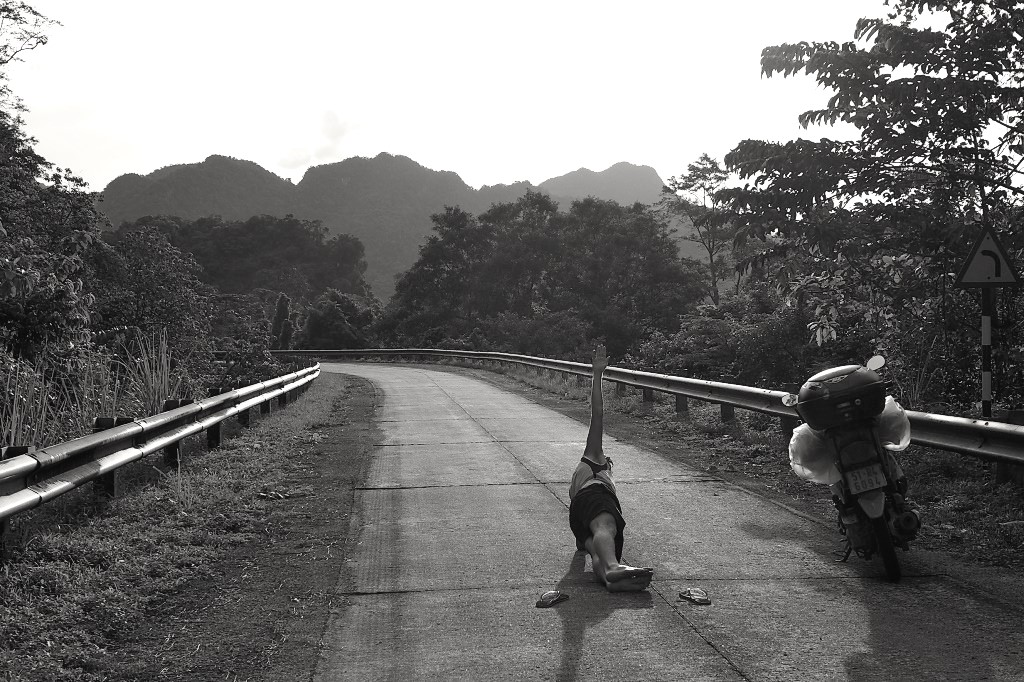
Breathwork:
In recent years, breathwork has become an important part of many people’s fitness, health and well-being routines. I started a few years ago. Breathwork is free, doesn’t require any accessories, and can be practiced almost anywhere and at any time. Breathwork can boost energy levels, improve immune system function and athletic output, reduce anxiety, and aid sleep among many other benefits. Most of these are very useful when travelling: getting over jetlag, for example, or making sure you don’t catch a virus on a long-haul flight, or helping you to remain patient and calm in the many difficult situations that travel can present, or being alert (and awake) for an early morning departure.
I started with the Wim Hoff technique, because it’s so basic, direct, accessible and easy to follow. Essentially, the method involves 2 minutes of deep breathing followed by a retention (holding your breath) for 1-3 minutes depending on your lung capacity, and then repeating the process 3-4 times. There’s nothing to lose in giving it a try – no money, no commitment, no equipment. Just practice the simple breathing technique once or twice a day for 10-15 minutes each time for a week or two and see if you notice any positive (or negative) results. For me, the benefits were obvious within a week.
These days, I practice breathwork for half an hour or more each day. I still use the Wim Hoff technique as well as other holotropic and tummo breathing routines and breath-related health ‘hacks’, such as the 4-7-8 method. You can google any of the above and find lots of information. For practical technique I would suggest starting with the Wim Hoff method because it’s an easy-to-follow, no bullshit approach. But for the benefits, science and theory behind breathwork (as well as technical instruction), I would recommend reading journalist James Nestor’s book, ‘Breath’, because he writes with clarity and approaches the subject rationally and objectively, whereas many other people stray into woo-woo pseudo-science too easily, too often.
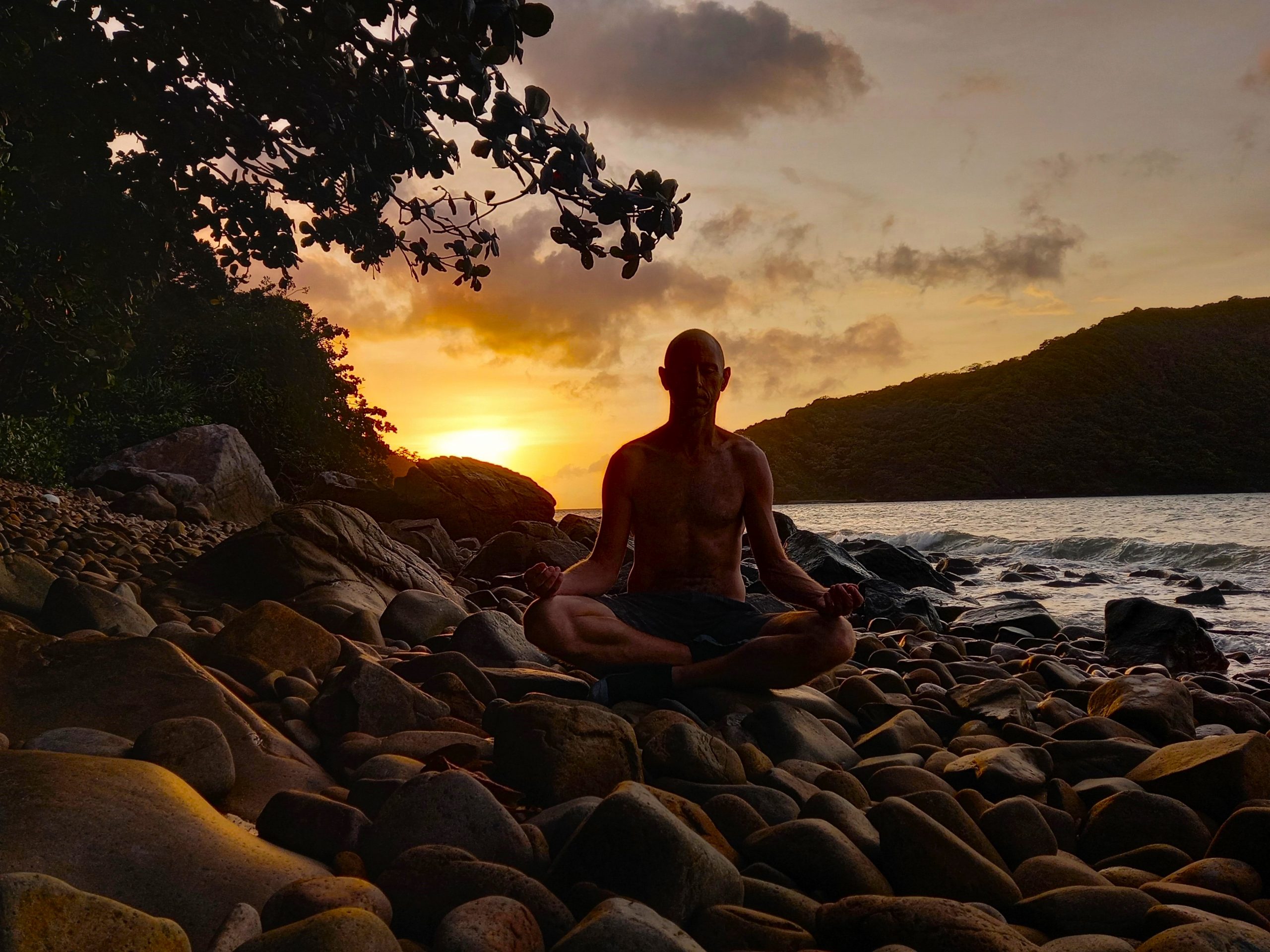

Swimming:
I like to swim, particularly in open water. If I’m travelling by the coast or lakes and rivers, I’ll try to use swimming as my main daily exercise. It’s free, fun, invigorating, and doesn’t require any equipment, save for an optional pair of goggles (great if you’re swimming over rocks or coral) and a swimming cap (necessary in my case to protect my shaved head from the sun). Swimming is a full-body, low-impact exercise, so it’s easy on your joints. But, more importantly, wild swimming is a great way to experience, get to know, and interact with the natural environment where you’re travelling. Swimming is immersive and somehow it feels like you get closer to your surroundings when you swim in them. Of course, another way to swim is to stay in a hotel or resort with a good pool, but the minimum length for decent laps is around 20 metres.
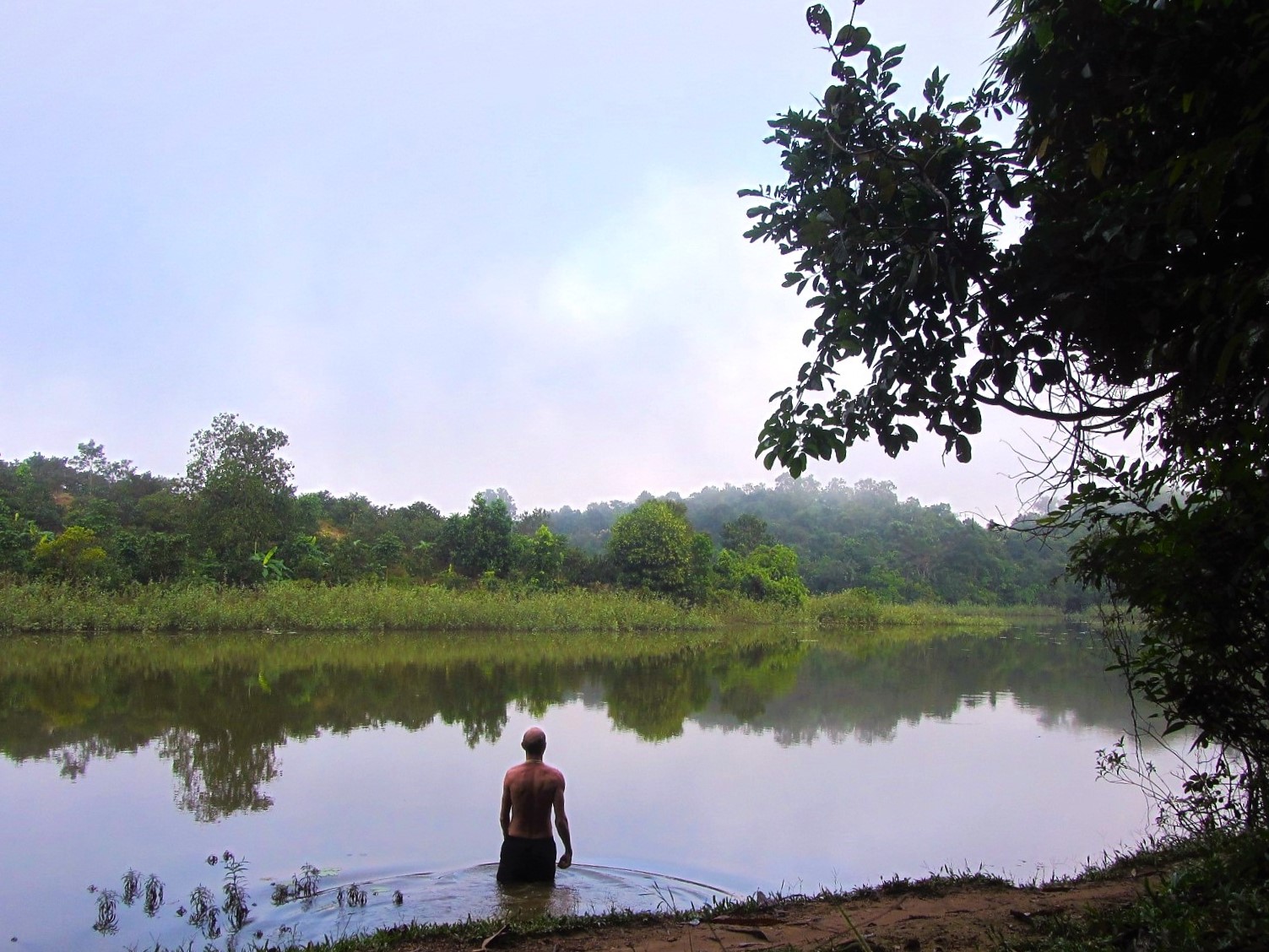
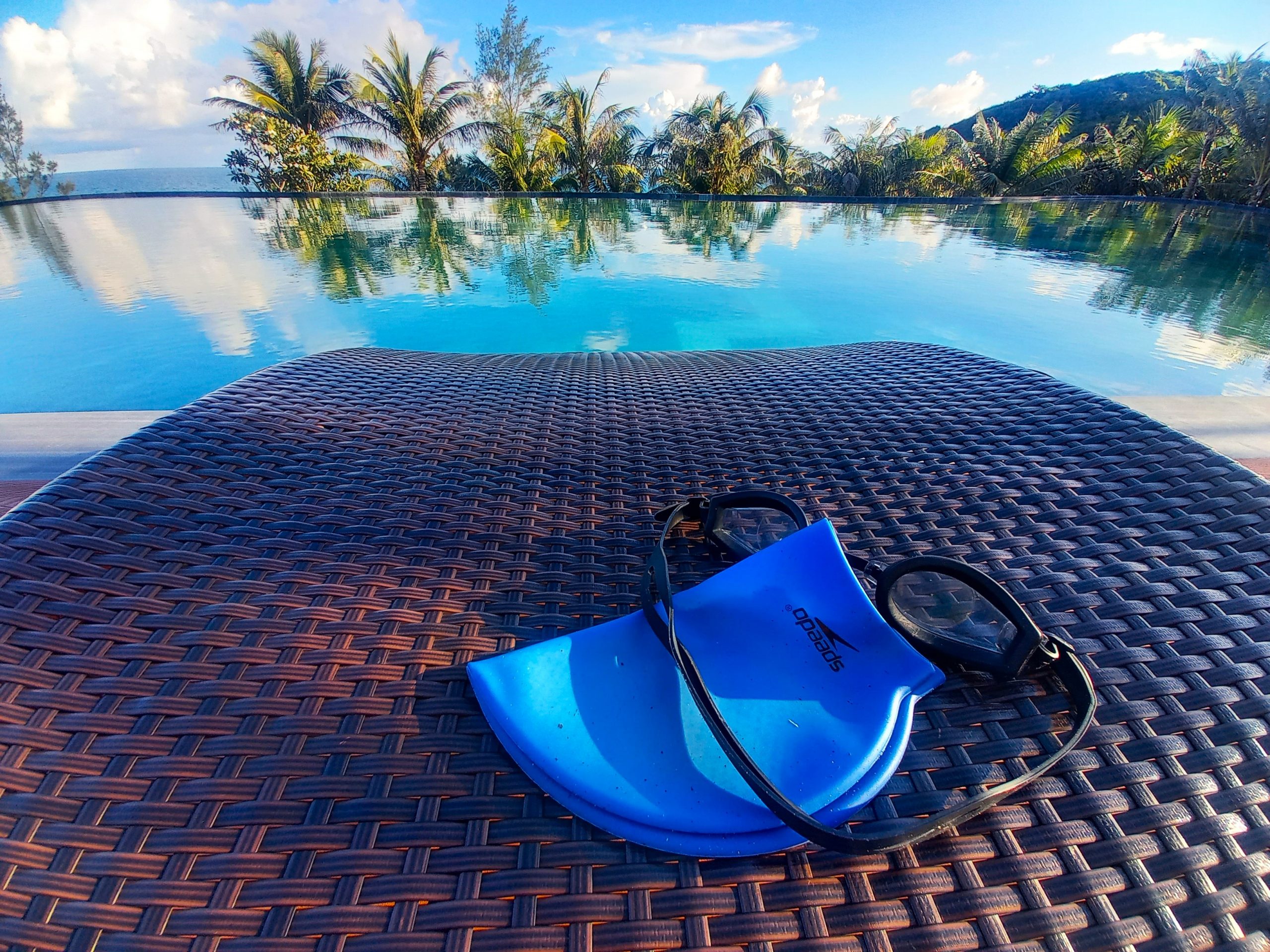
Running:
Although I don’t really enjoy running, it’s great exercise, always available, and a good way of seeing and exploring your locality when travelling. Urban running in Vietnam is pretty grim because of bad air quality, but running in the countryside, mountains or coastal villages can be fantastic. For example, when I research my Island Guides, I run along the seafront roads, some of which circumnavigate the entire island. Running barefoot along the beach at dawn or dusk is also great. I did this regularly when I was living on Phú Quốc Island. During that time, I noticed that running barefoot on the sand forces you to run ‘naturally’ – landing on your mid foot first rather than hitting the ground with your heel first, which is what most training shoes force you to do. (I realize this is just one school of thought on what ‘natural running’ is). Sets of sprints in the sand is also excellent exercise. Running is free and doesn’t require any extra equipment apart from a pair of trainers, if necessary.
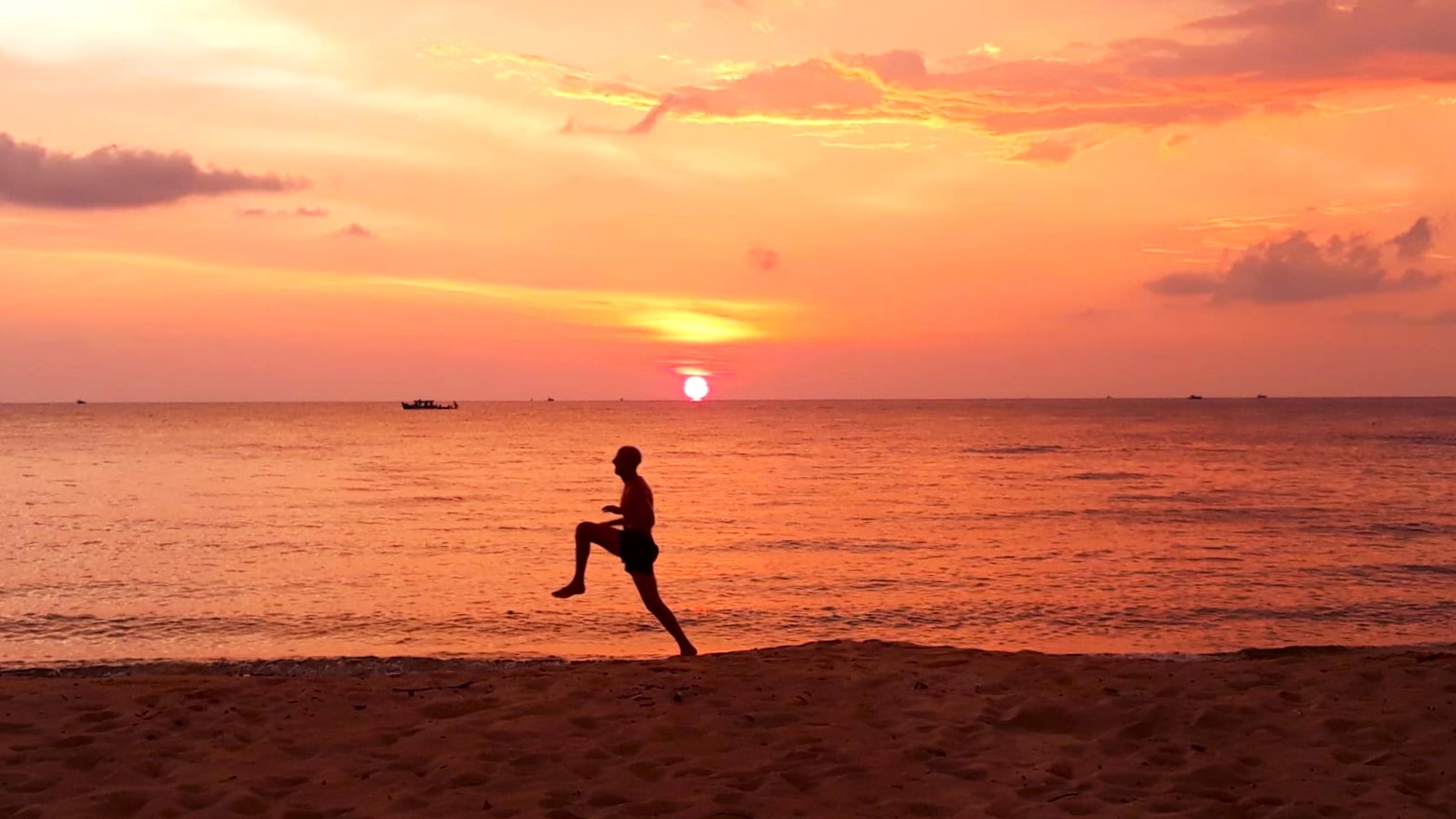
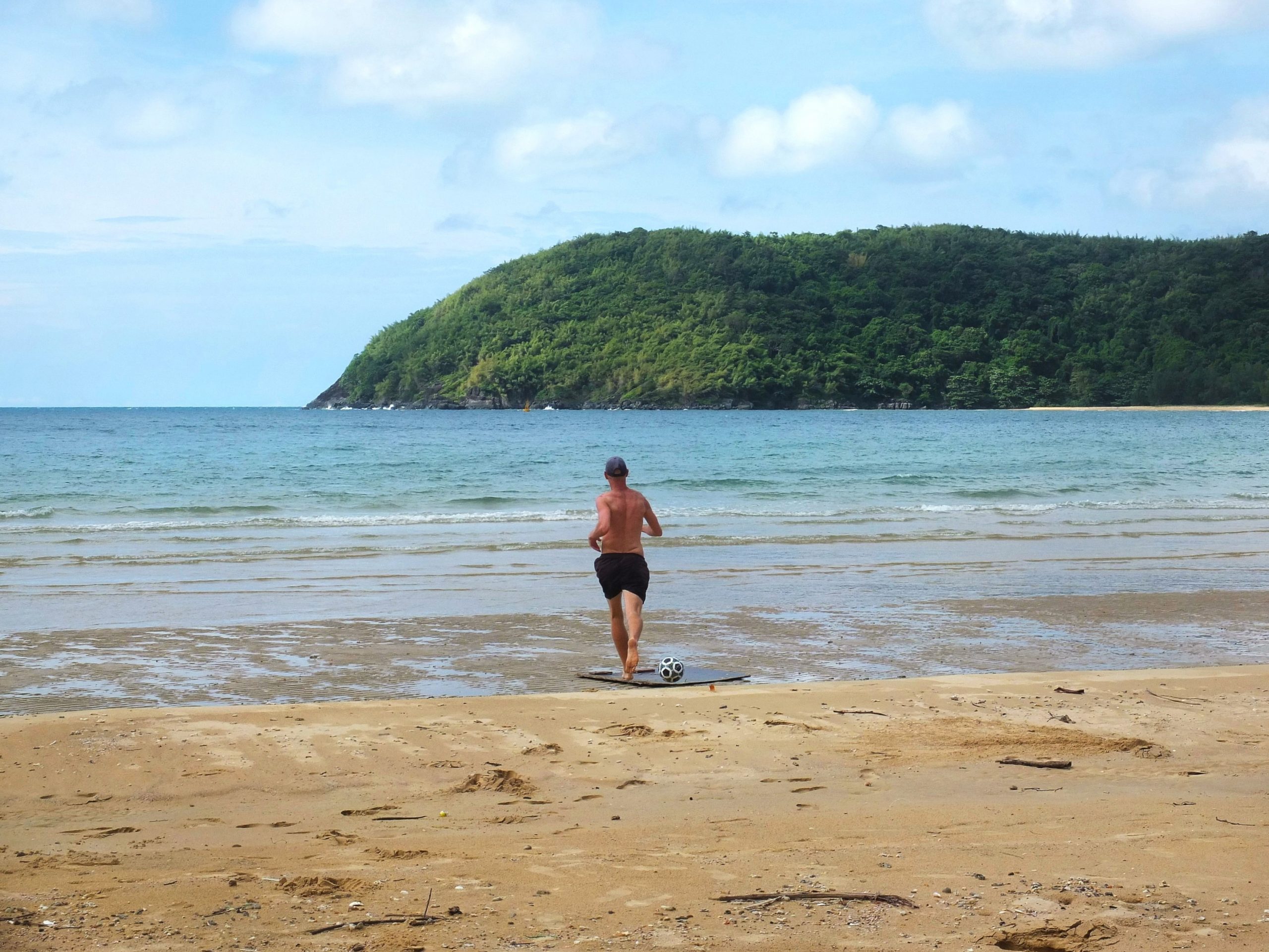
Walking & Hiking:
Over the last few years, I’ve started walking more in Vietnam, especially in the cities. Walking slows everything down, in a good way: you see more, notice details, and meet people. Urban walking is surprisingly good exercise. A day on your feet discovering a new city keeps your body ticking over nicely. Hiking in the countryside is a growing trend in Vietnam and there are more opportunities to do so than ever before. In particular, national parks, homestay areas, and islands have some great hiking trails that you can navigate independently. Sometimes there’s a small fee – for example, a national park entrance fee – but often the hikes are free. Many hikes in Vietnam have steep ascents and lead through jungles to spectacular view points, such as those on the Côn Đảo Islands. Hiking is good exercise, can be enjoyed solo or in a group, and enables you to access places and scenery that vehicles – even motorbikes – can’t.
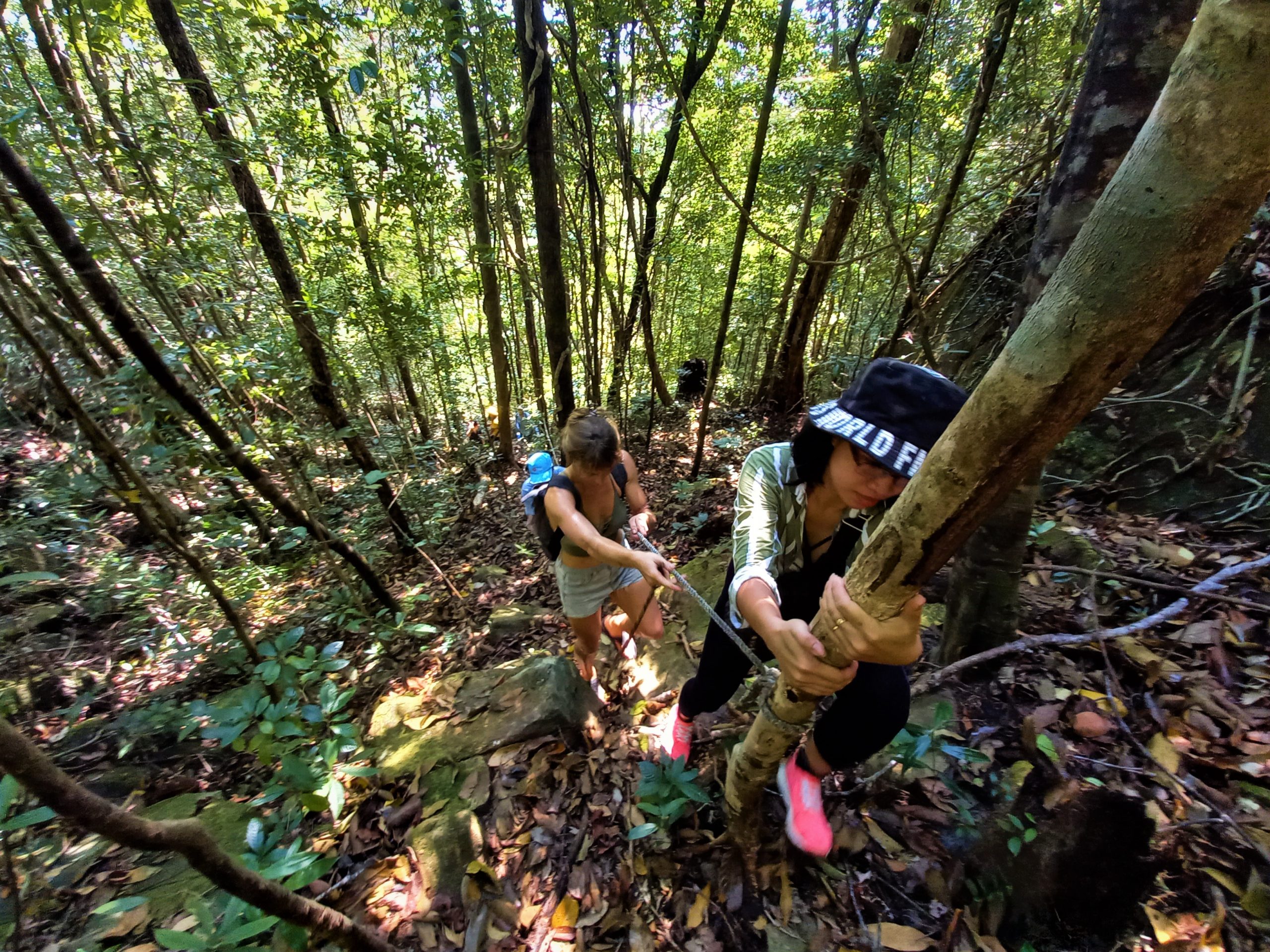
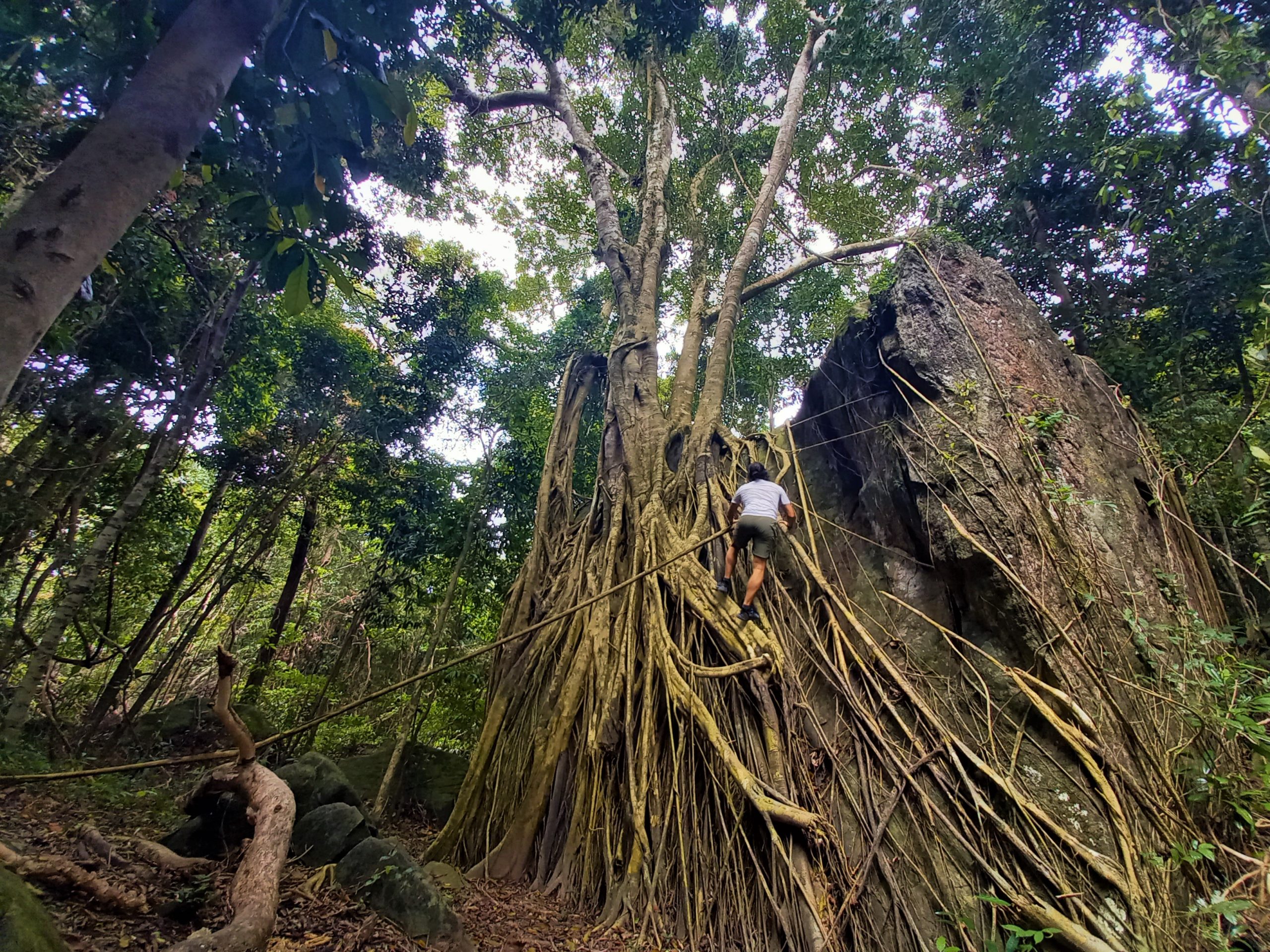
Stretching & Yoga:
I have a stretching routine that takes between 45-60 minutes. It doesn’t require any equipment and I can easily do it in a hotel bedroom or on a beach. The routine is a combination of stretches and postures I’ve learned from past classes in yoga, aikido, and other sports. It’s a rejuvenating, restorative exercise that I often do after a long motorbike ride or bus, train or plane journey. There are lots of good video tutorials and routines for stretching and yoga on YouTube and other video sharing platforms.

*Disclosure: All content on Vietnam Coracle is free to read and independently produced. I’ve written this guide because I want to: I enjoy staying fit when travelling and I want my readers to know about it. For more details, see the Disclosure & Disclaimer statements and About Page
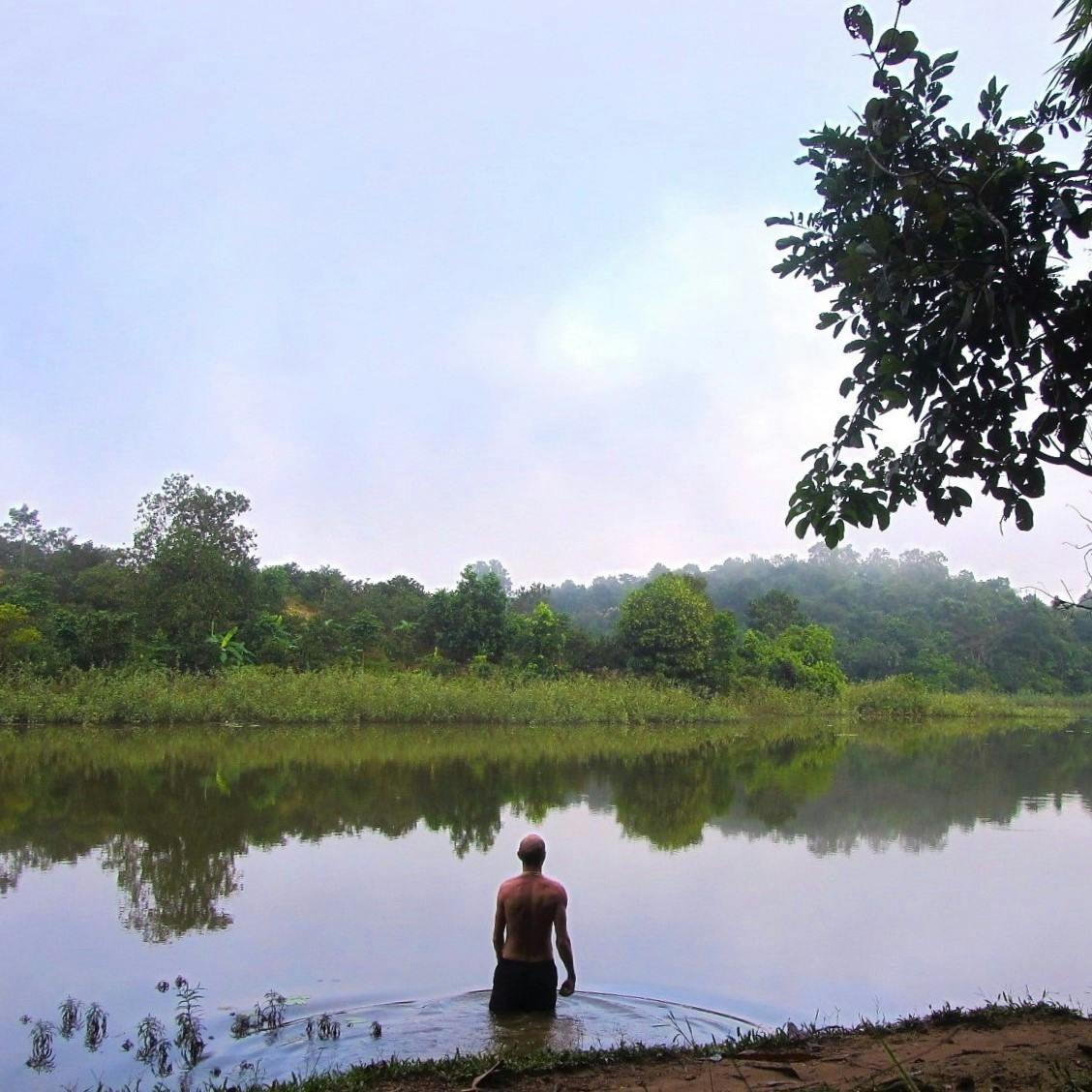
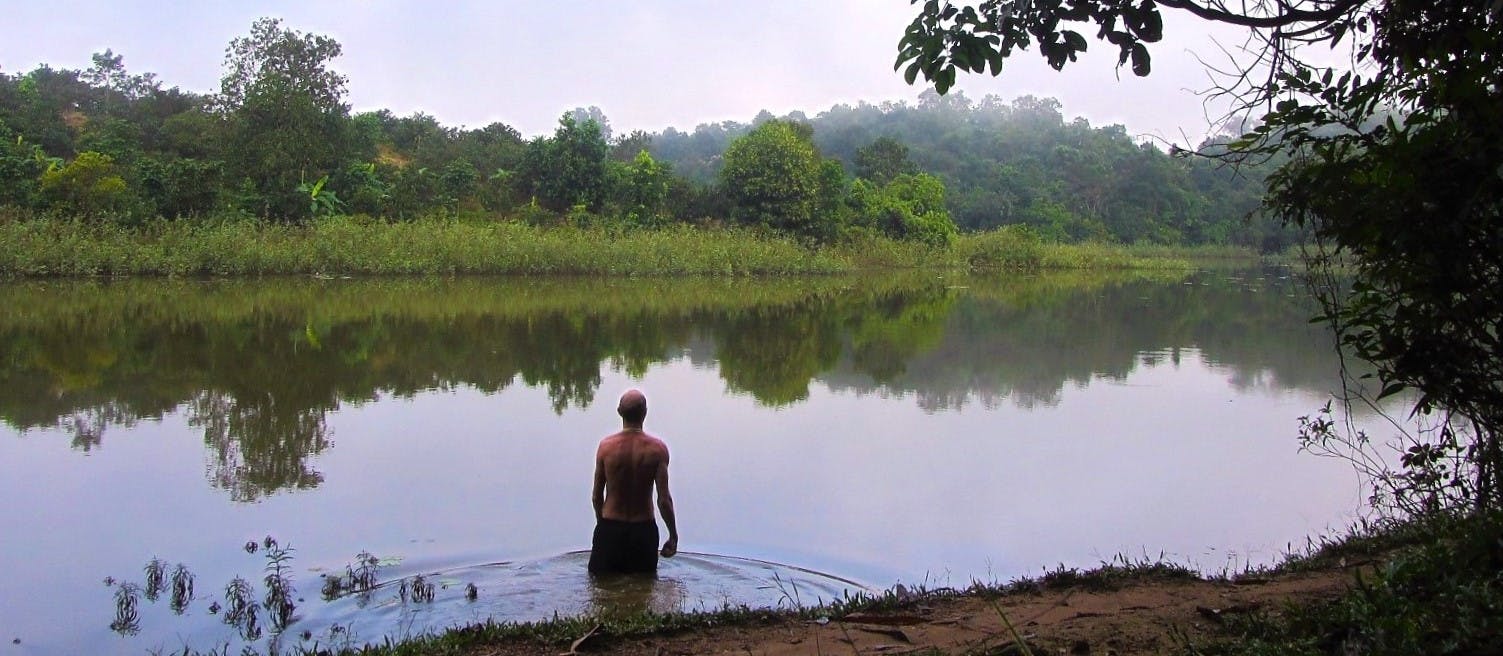

Could you go into more detail about your 45 minute stretching routine? If you know the names of specific stretches/yoga poses I can look them up. Or if you know a good video I can follow that would be helpful. I’m definitely concerned about my back during repeated long motorbike rides, so if any specific stretches and/or habits have been really helpful for you I’d love to hear about them.
Hi Rakhal,
I don’t really know the names of the stretches – they are a combination of ones I’ve learned/used over the years from different sports, martial arts and yoga.
For me, my lower back can get bad if riding for many hours on consecutive days, so perhaps it’s a good idea to search for stretches for your lower back that you can do in the morning before riding, and in the evening after riding.
Best,
Tom
I’m just gasping for breath – deep breathing and deeply impressed!
4-7-8 is about my limit, and swimming in a 30 metre pool (but in the last week it’s got far too cold in Hanoi at the moment), so it’s just walking and maybe some gym cycling for me until the weather gets warmer.
Hi Dominic,
Haha! Yes, I’m not keen on swimming in cold water either, but I have been trying to do it more often when I get the chance – cold water exposure is another major component of the Wim Hoff method.
Best,
Tom
I recently discovered walking backwards downhill on hikes here in the Wasatch mountains of Utah. Doing so saves the knees and, further, builds new muscle and improves one’s balance. It actually makes a hike even more of a workout, since walking backwards takes more effort, which is also good, in my view. I am in my 60’s, so, along with many of my peers, the padding in my knees is much less than when younger. Hiking forward downhill hurts if I overdo it.
When in Da Nang for several weeks in 2019, I hiked repeatedly on the Son Tra peninsula, where the mountain there rises over 2000 feet above the sea. I didn’t hike down backwards, but next time surely will. Look over the shoulder and you can steer easily. And be ready to come back the next day for another great hike in Vietnam, whether round Da Nang or Da Lat or Pleiku (I hiked at all three in 2019).
Hi John,
That’s an interesting hiking variation! 🙂 Perhaps I’ll try it next time.
Best,
Tom
Hi Tom, such amazing post and so timely as I am about to hit the road for a month. I even bough a mini scale hardly bigger than one foot to make sure I’m staying on track. Thank you SO much!
Take care, Noémi
Hi Noemi,
Thank you. And I hope you enjoy your upcoming road trip and manage to keep your fitness up, too! 🙂
Best,
Tom